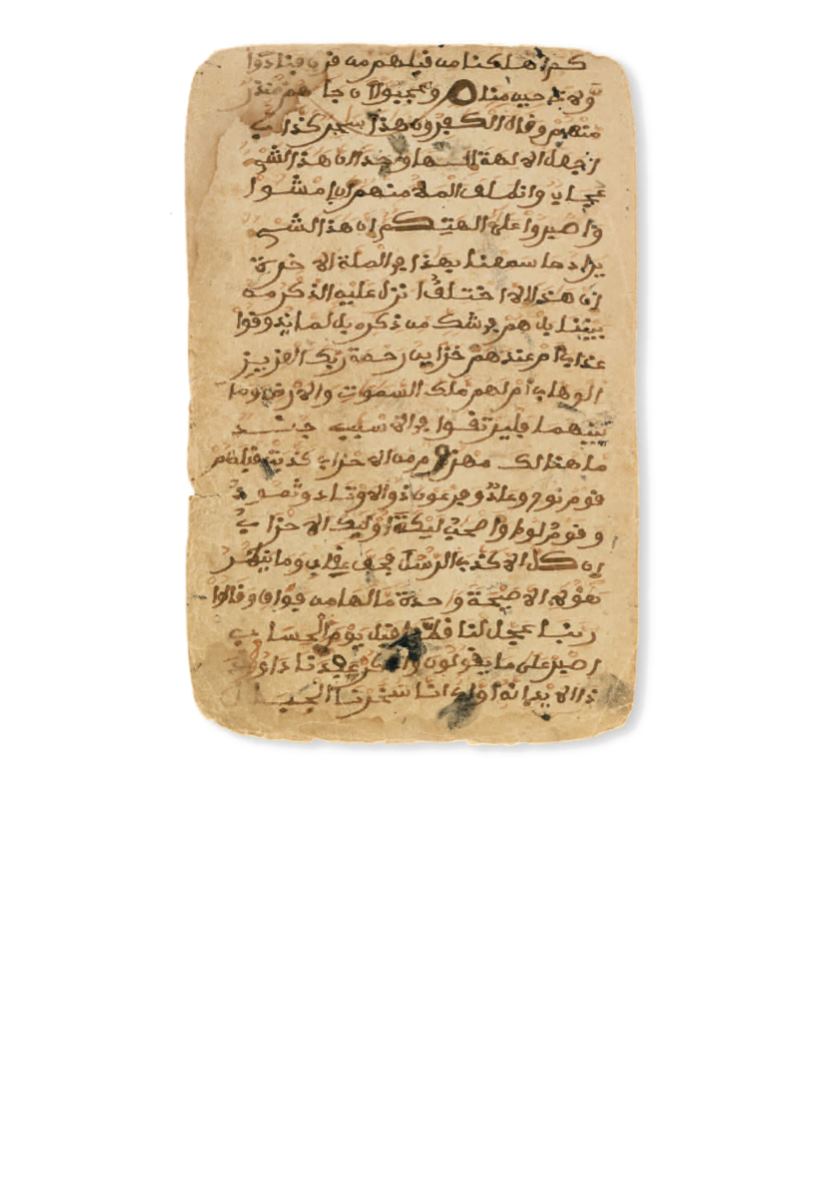

The Qur’an offered here is an excellent example, with its original leather pouch binding.
Provenance, and a word about the binding: The Qur’an being offered here comes from the Infa
Yattara family library in Timbuktu.All of the necessary paperwork, attesting to both the authenticity
of the manuscript as well as the certificates allowing the manuscript to be exported from Mali are
present.The 166 folio leaves of the manuscript are held loose, in their original leather binding, as is
traditional.The binding bears an incised design and is more like a pouch than the traditional book
binding in the Anglo-European tradition.
The script and format of the Qur’an is West African. Black and red inks are used, the red for the
vocalization marks, probably from cochineal dye.The Arabic script shows typical West African/North
African features, including a subscript dot on the f’a, superscript dot on the qaf, etc. Marginal notes
divide the manuscript into hizbs (sections of 1/60 of the Qur’an), and these are further divided into
thumns (eighths) in marginal notes. Several ornate panels occur at the beginnings of the surrahs 7,
19, and 38 (al-A’raf, Maryam, and Sad), but most surahs lack such panels.The paper bears a crown
or fleur-de-lis watermark, which suggests the manuscript dates to the 17th century.The manuscript is
from the InfaYattara family library inTimbuktu, its features are consistent with provenance from that
region, and Timbuktu was the major center of Islamic learning in that period, so it is very likely that
the manuscript was originally copied there.









